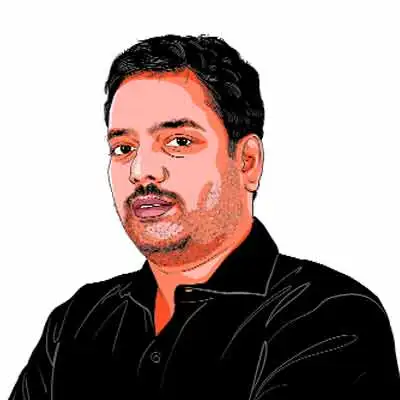Opinion UPAs mid-life ennui
Instead of pushing reforms,the govt appears listless in its second term...
If economic progress is the touchstone to assess the performance of the United Progressive Alliance in its year one of governance,it scores well. So,Prime Minister Manmohan Singh can gloat over the UPAs deft handling of the global crisis in his Report to the People to be released in the next few days. The people will take it with a pinch of salt,but not create a fuss. A rise in per capita income in India during a period when incomes shrank in the developed world deserves kudos.
But it would be short-sighted to let GDP growth rates or per capita incomes dominate a discussion on overall government performance. Because,for all practical purposes,UPA-II is surprisingly behaving like a mature,but staid,six-year-old government,rather than a nimble,aggressive and keen-to-prove coalition. It has spent much of the last 12 months in consolidating the work or gains of the previous five years.
To make matters worse,the Opposition seems to have lost its plot,frittering away opportunities to bring the ruling party to the dock. It is more divided than ever,and in the process,has left the UPA Congress and its allies complacent and a bit arrogant. Mamata Banerjees Trinamool Congress is unpredictable and M. Karunanidhis Dravida Munnetra Kazhagam is more concerned about plum ministries. The Congress itself has been more than willing to make compromises in a bid to stay in power. The way it handled the Budget in Parliament bargaining for BSP support by letting Mayawati off the CBI hook during a BJP-sponsored cut motion is ample evidence.
Like markets where the current value of a companys stock is dependent on future earnings potential,and inflationary expectations matter more than the current inflation rate in the conduct of monetary policy,so it is with governments. The governments stock today is more about what can be realistically expected from it in the next four years than what it achieved in the past one year. Unfortunately,not many are convinced about big-ticket reforms seeing the light of the day,despite India having a pragmatic economist as its prime minister,a seasoned politician as the finance minister and a forward-looking reformist as the deputy chairman of the Planning Commission. Forget economic reforms,there are no milestone-linked programmes to ensure long-term socio-economic prosperity either. When did we last hear of an objective and targeted plan to address critical issues of poverty,unemployment (linked to it,skill development) and housing (given large-scale rural-to-urban migration)?
There is a feeling,now rife,that the government is increasingly ignoring serious issues,or relegating them to the backburner. Many big-ticket items have been conveniently moved from the to do list to the can wait list. Drawing the wrong lessons from the global crisis,the government has put financial sector reforms on the backburner. In infrastructure,power and ports are two vital areas that have only seen deterioration. Little to no reforms have already raised electricity costs in India to one of the highest in the world. This will only cripple industry and render it uncompetitive. It beats logic that ports important from a strategic and geo-political point of view are being ignored despite India not figuring anywhere even in the Asian pecking order. Global crude oil prices may be low enough at $70 a barrel to let oil PSUs adjust fuel product prices on its own,but there is no semblance of any urgency to dismantle the administered pricing mechanism. Neither is there any will to move be it slow and calibrated ahead on lending industry some more flexibility in hiring labour without diluting any aspect of workmens social security net.
In UPA-I,there was significant business being done despite the Left parties,who had very strong ideological views on issues ranging from labour to the financial sector. To handle tricky issues,the government set up many groups of ministers (GoMs). The GoMs,originally conceived by the BJP-led National Democratic Alliance,became an institutional mechanism under the UPA coalition. Pranab Mukherjee,who chaired about 55-56 GoMs in UPA-I admits that the mechanism works well and plays a significant role in carrying the government agenda forward. In UPA-II,he chairs only about 25 GoMs,a sign perhaps of the governments overall lack of interest and urgency in pushing the envelope on issues where there are divergent views.
But,lets give the UPA its due too. The least the Indian people expected from Manmohan Singh (now guru to US President Barack Obama) in his first stint as prime minister was that he would ensure a quick take-off of the countrys trillion dollar economy after the global crisis. His government delivered,without any knee-jerk reaction to events that spread panic across the globe and made even the most advanced economies resort to protectionism. The US financial crisis in 2008,that spilled over to the real economy,tested the innate reform credentials of all global leaders. Singh and his lieutenants Montek Singh Ahluwalia and P. Chidambaram were steadfast in their liberal beliefs and steered the Indian economy out of the crisis with least damage. In 2008-09 and 2009-10,when most global economies contracted,India grew 7.5 to 8 per cent.
But,as I said,equity is more about future capability than past laurels. UPA-II has to make the right moves to restore the reformist credentials of its top leaders.
pv.iyer@expressindia.com





